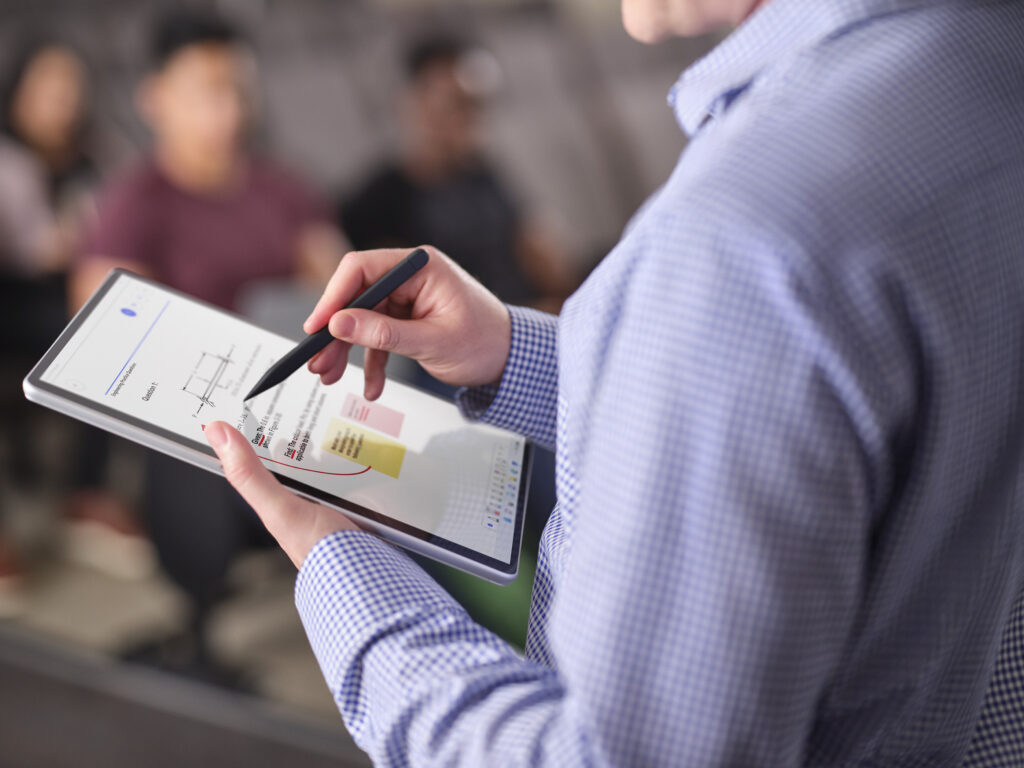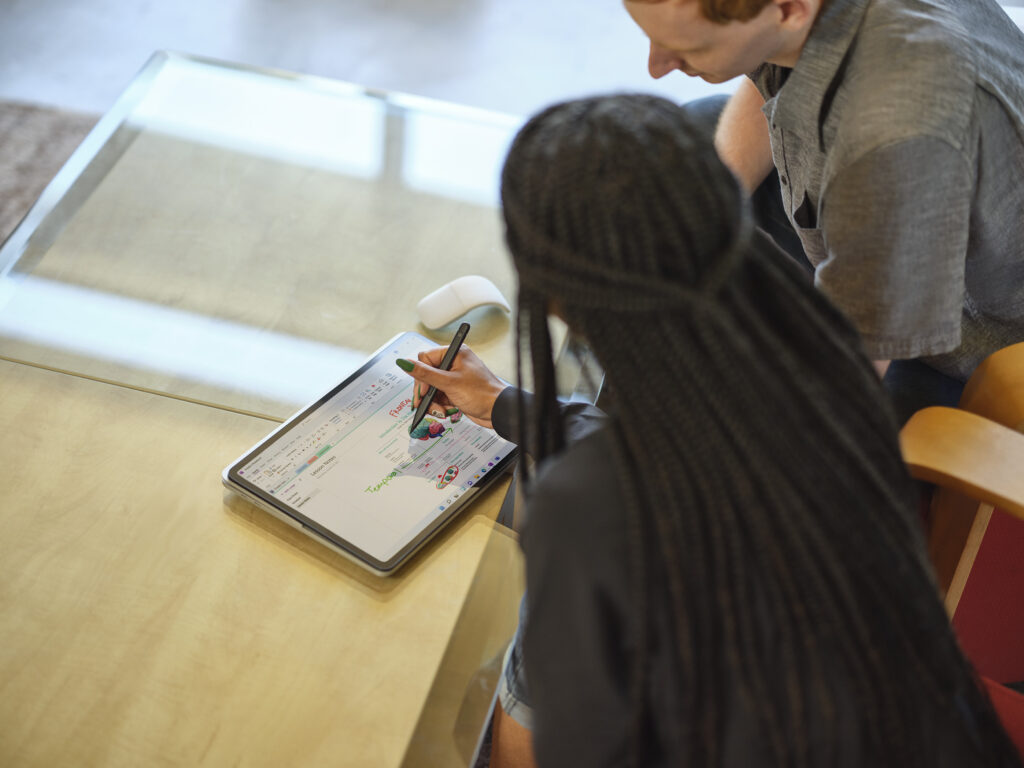The Power of the Pen in the Hybrid World
Chris Lorigan, Surface Portfolio Product Manager at Microsoft UK shares his thoughts about the use of Digital Pens to Rapid Reviews UK.
Today there are a myriad of devices we can take notes on, with students and workers often making the most of the speed of electronic notetaking over traditional pen and paper. Gone are the days of illegible scrawl, replaced with efficiency in typing.
But, has the method we’ve developed to take notes at speed reduced deep processing and our ability to truly commit new information to memory? Is the same rate of learning happening or has typing only led to mindless processing? The act of note-taking acts as an aid to comprehension and can help people to recall information and make connections between ideas. It is the cognitive effort of sketching and mapping out ideas that provide the means to reflect, process and internalise new ideas. Digital tools can assist in this process; through a paperless approach, digital notes provide a record of a lifetime of learning, creating, and thinking.
When writing by hand, our brains actually process information in far more detail, helping us load facts and insights into our memory. Researchers revealed that writing by hand allows our brains to process information better and allows for stronger memory recall. A pen and paper are able to boost our memory more than smart devices as the dynamic medium facilitates recall through offering a more memorable image of the information. But is there a way to experience the best of both worlds? Digital inking supports the speed and efficiency gains that typing afforded us in certain industries while keeping alive the art of writing, proving to us that there is a middle ground between the traditional use of pen and paper and digital use of typing.

As the world has become digitalised, an abundance of texting and computer typing has caused many of us to neglect our penmanship, and fine handwriting and hand sketching has become a lost art for some time now. However, arguably it has never been easier to tap into our creative side using technology. There is undoubtedly incredible value in using the pen and paper system, but the power of the pen in the hybrid work provides a solution that is reborn in the digital world.
Digital pens are helping us to rediscover and connect to the art form of writing. While digital pens don’t have ink – they feel like they do. The element of personal touch through handwritten notes is kept alive through the use of a digital pen or stylus. The absence of a keyboard and mouse, replaced by a single digital pen offers a more natural interaction with electronic devices which is appealing as it creates a simpler and more intuitive interaction for the user.
The is attractive for the modern work force who rely on good equipment such as a two-in-one device to improve productivity at work – whether that be working in the office or remote work. The human inclination to touch using our fingers is natural, just as interacting with surfaces via a crayon, pencil or pen is something children have learnt to do through infancy and throughout adolescence and into adulthood. Children and adults rely upon touch for many things and this skill only evolves as we mature. Ultimately, writing is interwoven throughout our personal and professional lives.
This skill is also imperative in the workplace, as being able to create and plan digital content through writing and sketching is a key component for many industries. The digital pen has created a tool that not only supports writing, analysing, and sketching but communication as a whole. It improves ideation and problem solving; allowing people to communicate via different means and collaborate creatively between teams, working from home, across borders and time zones in this new hybrid world.

Writers can go through the same motions of handwriting while simultaneously storing a digital copy of the written notes, affording them the creativity in the design and artwork that they would get through pen and paper. New devices with sensors built in can provide haptic feedback as you’re inking on the screen, which simulates the subtle tactile response you get from putting a pen to paper.
Using a stylus like the Surface Slim Pen with a hybrid device like a Surface Pro 8 allows writing at the speed of thought, delivering a natural writing and drawing experience. While the inclusion of a stylus is hardly revolutionary, by combining the accuracy of a pen with the communication and shareability of digital information, users can reclaim the lost art of writing and experience the best of both worlds.
Chris Lorigan, Surface Portfolio Product Manager, Microsoft UK





